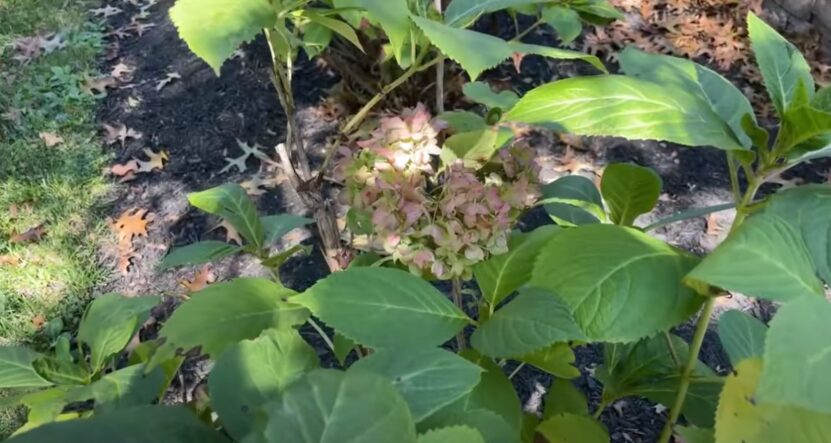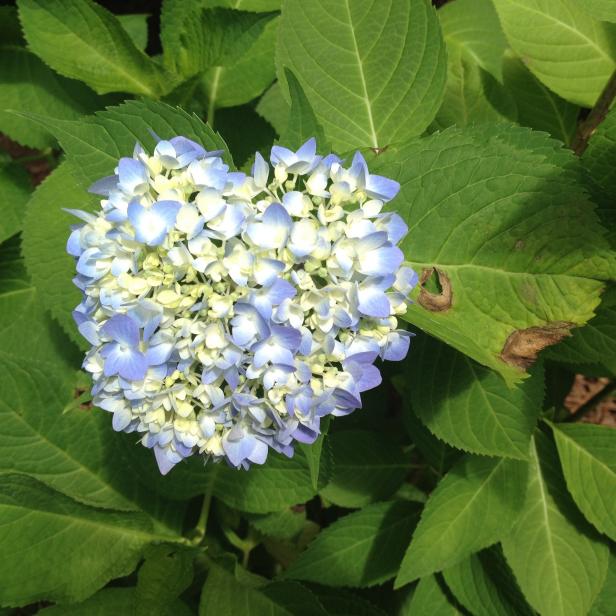An Unbiased View of Hydrangea Leaves Turning Yellow
An Unbiased View of Hydrangea Leaves Turning Yellow
Blog Article
5 Simple Techniques For Hydrangea Leaves Turning Yellow
Table of ContentsSome Ideas on Hydrangea Leaves Turning Yellow You Need To KnowAn Unbiased View of Hydrangea Leaves Turning YellowSome Known Facts About Hydrangea Leaves Turning Yellow.About Hydrangea Leaves Turning YellowExcitement About Hydrangea Leaves Turning YellowUnknown Facts About Hydrangea Leaves Turning Yellow
One opportunity is that the plant is not getting enough sunshine. During the wintertime months, the days are much shorter, and the sun is not as extreme, so make certain to place your Hydrangea in a place where it will certainly obtain at least 6 hours of sunshine daily. An additional reason for Hydrangea yellow leaves in wintertime could be excessive water.The leaves could be turning yellow due to temperature stress. Hydrangeas like cooler temperature levels, so if the plant is in an area that obtains too warm or too cool, the fallen leaves will certainly turn yellow. If you believe temperature level stress and anxiety may be the concern, try relocating your Hydrangea to a various place or safeguarding it from the aspects with a cloth cover.
New growth will be observed in very early spring, when you'll notice eco-friendly vegetation sprouting from stems that might have shown up dead. If your fallen leaves are transforming brown in spring or summertime, there are most likely various other variables at play (Hydrangea Leaves Turning Yellow). The accurate factors depend on the variety and their expanding conditions, but generally, brown hydrangea leaves are an indication of dehydration and wilting in the heat
Excitement About Hydrangea Leaves Turning Yellow

Wilting is caused by absence of dampness, indicating there are a couple of great tricks to use to avoid this from occurring. Give your hydrangeas a healthy glug of water every few days when the temperatures are climbing high, and deal with the soil to much better retain dampness. After watering, a dab of mulch around the base of each plant should assist with this by maintaining wetness in the dirt.
This interrupts fungi spores from settling. "The Botrytis fungi thrives in cool and damp conditions, so prevent bathing the entire plant when sprinkling and just water at the roots," shares Roy Nicol, a Master Gardener. If you have actually missed the chance for avoidance and are dealing with an infection you should get rid of all dead or seriously infected leaves from the plant and damage them to prevent further spread.
Getting My Hydrangea Leaves Turning Yellow To Work
As a general general rule, we recommend eliminating leaves when they are 50% brown or higher. While browning caused by any kind of reason can not be reversed, taking the restorative activity defined above will motivate the plant to expand brand-new leaves so the harmed fallen leaves either diminish normally or can be gotten rid of by the garden enthusiast.
Hydrangeas ought to be sprinkled just when the leading couple of inches of dirt are completely dry, and must be given a complete saturating each time. Underwatered hydrangeas are likely to have yellow, wilting, and drooping fallen leaves.
The method you fix hydrangea leaves transforming yellow depends upon the key concern causing the yellow fallen leaves. This can be challenging to identify, once you do useful site you will certainly have the ability to change your plant care as necessary to care for the issue. As mentioned before, an usual concern with hydrangeas is nutrition shortages.
The Ultimate Guide To Hydrangea Leaves Turning Yellow
Throughout the height growing season, you need to sprinkle at a price of concerning 1 inch each week. If you are fretted about not properly watering your hydrangeas, there are a pair of things you can do. Adding mulch to the base of the plants over the origin zone assistance to control the temperature around the bush and keep water in the soil.
Alternatively, you can buy and install easy watering globes. Watering worlds hold water in them and slowly launch this water right into the dirt as the ground becomes dry. Simply fill up the world with water, stick the spout right into the soil within the origin area near the base of the plant, and leave it in position up until all the water is gone.
If it is also severe, some plants will certainly never ever recoup from transplant shock and will remain to decline till they die. Reduce transplant shock by including as numerous roots as feasible when excavating great site up your plant to relocate. Be sure to provide even more water than usual in the weeks following planting to help your plant recoup and expand brand-new roots.
Things about Hydrangea Leaves Turning Yellow
To stay clear of spreading fungal illness, be certain to thouroughly tidy and decontaminate any kind of trimming tools prior to and after use. Lastly, you can attempt to purge the origins with water to eliminate excess fertlizer.
Your hydrangea plant chooses well-drained, moist dirt. If the pot has bad drain, or your soil is swamped, the fallen leaves will certainly begin to turn yellow. Overwatering makes the soil soggy (Hydrangea Leaves Turning Yellow). Flooded and soggy dirt can bring about stunted growth, fallen leave staining, and, worst of all, rot fungal conditions. Although over-watering can be hazardous, under-watering is not an alternative either.
If you don't water your hydrangea plant for even more than a week, the leaves will certainly begin turning yellow. Fungal conditions that assault the plants tend to show indications on the roots and the fallen leaves of the plant.
Some Of Hydrangea Leaves Turning Yellow

Report this page